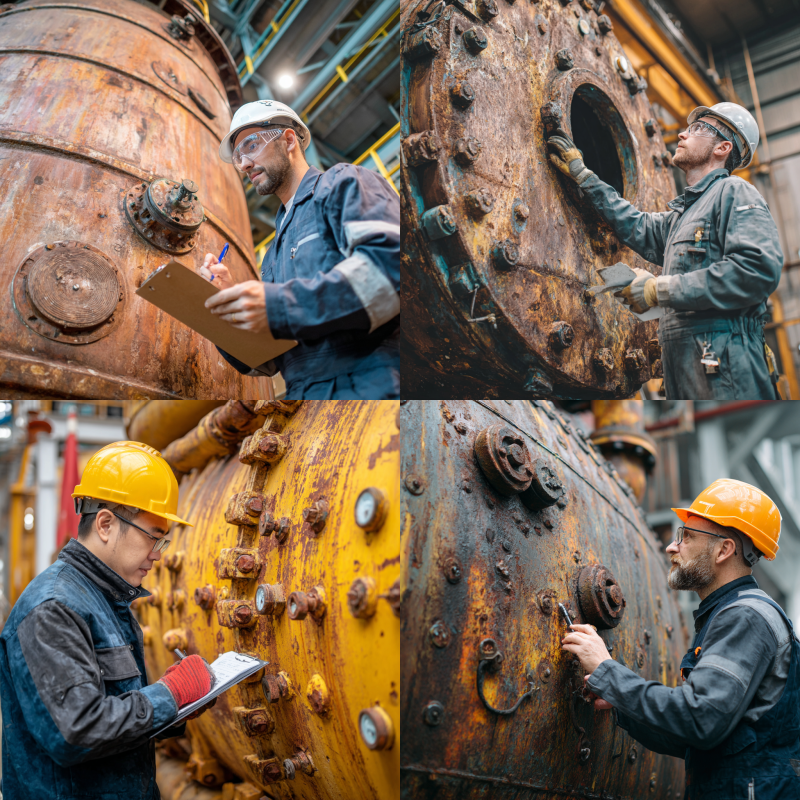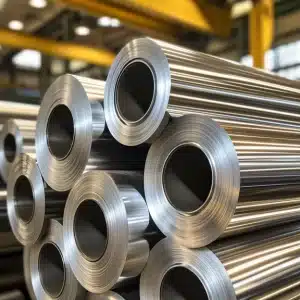
What Is Pressure Vessel Maintenance? Keep Your Equipment Safe
Understanding What Is Pressure Vessel Maintenance and Why It Matters
Pressure vessels handle high-pressure gases or liquids and require special care to keep everyone safe. According to the U.S. Chemical Safety and Hazard Investigation Board, failures in these vessels account for roughly 20% of major industrial accidents around the world [1]. If you’ve ever wondered “what is pressure vessel maintenance” and why it is so important, you’re in the right place. In this ultimate guide, you’ll learn the essentials of maintaining your pressure vessels, how inspections work, and how a consistent schedule protects your bottom line and the people around you.
Discover what is pressure vessel maintenance
Pressure vessel maintenance is the set of procedures, inspections, and repairs that ensure a vessel can safely contain pressurized fluids or gases. This includes internal and external examinations (often every five years), hydrostatic tests, and Non-Destructive Testing (NDT) methods. Cleaning and proactive repairs count too. By following a proper maintenance schedule, you help prevent cracks, corrosions, and leaks that might otherwise cause significant hazards.
Many industries, from oil and gas to water treatment, rely on pressure vessels for critical tasks. Over time, a vessel’s metal can become fatigued, corroded, or otherwise compromised by extreme temperatures and pressures. Staying on top of routine checks gives you early warnings of trouble. Good news: these checks are often straightforward when you follow standard guidelines such as the ASME Boiler and Pressure Vessel Code in the United States, or comparable directives like the Pressure Equipment Directive in the EU [2].
If you need a deeper look at what a pressure vessel is in general, you can explore what is a pressure vessel. For a closer look at typical configurations, see what are the different types of pressure vessels.
Understand why maintenance matters
Maintenance extends the lifespan of your vessel, helps you comply with regulations, and keeps people safe from catastrophic incidents like explosions or toxic leaks. When a cracked pressure vessel leaks, it can cause downtime, lower productivity, and even lead to serious health hazards. For instance, inhaling harmful gases from a failing vessel may result in immediate risks for on-site workers [3].
One tragic example is the 2010 Anacortes Refinery accident in Washington, where failure to maintain a heat exchanger resulted in seven fatalities [1]. This stark reminder of how critical upkeep can be has pushed many facilities to schedule more frequent inspections, even beyond minimum legal requirements. By keeping your vessel in top condition, you also strengthen your facility’s reputation, which can be valuable if you’re searching for a reliable pressure vessel manufacturer in the USA or seeking certification under recognized codes.
Follow recognized safety standards
Globally, engineering authorities require that pressure vessels meet specific guidelines:
- In the United States, the ASME Boiler and Pressure Vessel Code sets design, fabrication, testing, and inspection standards. You can learn more about regulations in what are pressure vessel codes.
- Europe enforces the Pressure Equipment Directive.
- International certification bodies, like Lloyd’s or Germanischer Lloyd, govern marine or specialized sectors.
Staying compliant is crucial for two reasons. First, many regulations are legally binding, with noncompliance resulting in fines, forced shutdowns, or the inability to operate. Second, these standards often incorporate decades of research and real incident data, so they help prevent many avoidable design and maintenance failures. If you’re curious about the difference between a standard vessel and other storage solutions, check out what is the difference between a pressure vessel and a tank.
Plan your inspection schedule
A well-planned inspection schedule allows you to catch problems early. Here are some common guidelines:
External exams every five years
Regulations often require that you thoroughly examine the vessel from the outside at least once in this period. You’ll look for dents, bulges, corrosion, or leaks.
Internal exams for accessible vessels
If your vessel has a manhole or inspection opening, you’ll usually need an internal check every five years too [4]. This inspection may involve climbing inside (with proper safety gear) to look for cracks, thinning metal, or chemical buildup.
Hydrostatic tests
Typical requirements call for checking your vessel at 1.25 times its maximum allowable working pressure twice within any five-year timeframe, with no more than three years between these tests.
Some vessels in severe service conditions need more frequent checks, per API 510 recommendations.
Non-Destructive Testing (NDT) intervals
Techniques such as ultrasonic testing or radiographic testing often happen every one to two years. In higher-risk environments, you might test more frequently [5].
To learn more about inspection requirements, see how often should a pressure vessel be inspected. Even if your last inspection revealed no faults, repeated checks remain essential since vessels operate under changing loads and conditions.
Monitor signs of vessel trouble
Knowing what to look for day to day helps you spot potential issues before they get worse. Common red flags include:
- Visible cracks, dents, or bulges.
- Unusual noises like hissing or knocking.
- Leaks or drops in pressure.
- Strange odors, such as rotten eggs or sulfur.
If you find any of these issues, schedule an immediate inspection. Even industries that allow up to 75% wear before replacing parts (a “replace when needed” approach) risk sudden failures if they ignore these signs. You can introduce a less tolerant “replace when necessary” plan that triggers action at 50% wear to reduce sudden breakdowns.
Good news: persistent monitoring doesn’t have to be complicated. You can keep an updated record of each vessel’s performance, log any changes in pressure or temperature, and compare them week by week. By spotting fluctuations early, you save time and cost later.
Use essential testing methods
Not every issue is visible to the naked eye, so specialized tests can uncover hidden flaws:
Radiographic testing
Often used to check weld integrity, since quality welding is vital for resisting high pressure. X-rays or gamma rays pass through the metal, highlighting cracks or weak points.
Ultrasonic testing
Sound waves measure wall thickness. You can detect internal corrosion or thinning in minutes with small handheld devices.
Magnetic particle or dye penetrant testing
These methods can reveal surface cracks otherwise hard to catch visually, including hairline fractures in welds.
Corrosion monitoring
Labs can collect samples or use sensors to estimate ongoing corrosion rates based on your vessel’s environment, temperature, and usage
Non-Destructive Testing allows you to avoid shutting down critical operations for long. Still, some testing methods require the vessel to be offline, especially if internal scans are involved. By planning tests outside of peak production hours, you can minimize disruption.
Decide on repairs or replacement
When an inspection reveals damage, you’ll typically evaluate whether it’s more cost-effective to fix or replace the vessel. Minor issues like small pits, cracks, or thinning walls often respond well to localized repairs:
- Weld repair for cracks, following ASME or NBIC standards.
- Replacement of corroded linings or tubes.
- Surface treatments to restore or protect against further damage [8].
However, severe structural failures, advanced corrosion, or repeated leaks could justify a full replacement. Repeated repairs can add up in cost, especially if the vessel must be taken offline repeatedly. It’s wise to look at the vessel’s overall age, the frequency of breakdowns, and your budget for long-term reliability. If your facility can’t afford repeated downtime, a new, certified vessel might pay for itself more quickly than ongoing fixes.
If you’re concerned about selecting the right materials for replacements, read more on pressure vessel materials and how they influence performance in harsh conditions. You may also consider how to maintain a pressure vessel for best-practice tips.
Apply best safety practices
Maintenance is more than just technical work. It’s about ensuring every procedure is carried out safely. Here are a few strategies:
- Enforce lockout/tagout protocols before inspections, especially internal exams.
- Give your staff proper training in handling pressurized equipment.
- Maintain updated documentation on each vessel’s performance history.
- Inspect safety features like pressure relief valves to confirm they’re in working order.
Don’t skip personal protective equipment (PPE) for those performing the checks. While it may feel like an extra step, failing to follow safety protocols can lead to lapses during routine maintenance. Consistency, along with a healthy respect for pressure vessel hazards, goes a long way in preventing accidents.
What is pressure vessel maintenance and your next steps
By now, you should have a solid grasp on what is pressure vessel maintenance, why it matters, and how to keep your equipment safe. Whether you own a small compressed-air tank or run a large refinery, the principles remain the same: schedule regular checks, fix or replace parts as needed, and lean on recognized standards like ASME Boiler and Pressure Vessel Code. You’ll not only avoid sudden outages and health risks but also extend the life of your investment.
If you’d like more detailed insights, you can explore pressure vessel maintenance or review pressure vessel codes to understand your legal responsibilities. Remember that consistent upkeep is an investment in safety, efficiency, and peace of mind.
Need a reliable partner?
Red River specializes in the design and manufacturing of pressure vessels. We also fabricate related items such as prefabricated spools and skid packages.
Reach out to us today and experience the Red River difference. Where American-made products and American Values come together, we care more.
Frequently asked questions
What is pressure vessel maintenance?
Pressure vessel maintenance is a process of inspecting, testing, and servicing pressure vessels to ensure safety and compliance. This includes detecting wear, preventing failures, and extending the vessel’s lifespan.
How to maintain a pressure vessel?
To maintain a pressure vessel, follow codes, inspect routinely, and use protective measures to prevent damage. Train personnel for checks, replace parts promptly, and utilize advanced testing methods. Discover our capabilities.
How often should you inspect a pressure vessel?
External inspections are typically needed every five years, with internal ones if accessible. Always consult standards and manufacturer guidelines for specific requirements. Contact us for guidance.
What types of tests are used during pressure vessel maintenance?
Non-Destructive Testing (NDT) methods such as radiographic, ultrasonic, and magnetic particle testing help identify cracks, thinning, or corrosion. You might also perform hydrostatic tests at 1.25 times the vessel’s working pressure.
Why do pressure vessels need a Written Scheme of Examinations (WSE)?
Before you put a new or modified pressure system into service, a WSE outlines the schedule and type of exams. It ensures regulators and insurers that you’ll maintain consistent inspections in line with local regulations.
Can you do repairs on your own?
Small, superficial fixes might be manageable if you have certified welders on staff, but major repairs demand compliance with ASME or NBIC standards. Hiring specialists with the right credentials is best for structural or weld-intensive repairs.
What is the difference between a pressure vessel and a tank?
A tank generally holds fluids at or near atmospheric pressure. A pressure vessel is specifically designed to handle internal or external pressure that differs substantially from ambient conditions. For a deeper explanation, visit what is the difference between a pressure vessel and a tank.
Does insurance require regular pressure vessel maintenance?
Yes, most insurance companies require documented inspections and upkeep. Failure to meet these rules may result in higher premiums, non-renewal, or uncovered claims in the event of an accident.
Which materials stand up best in harsh conditions?
Carbon steel and stainless steel often work well for high-pressure or high-temperature uses, though each environment is unique. If you’re unsure, see what materials are used in pressure vessels for guidance.
Key takeaways
- Regular maintenance extends the useful life of your pressure vessel and lowers safety risks.
- Inspections typically happen every five years, with some industries requiring more frequent NDT checks.
- Safety standards like ASME, API 510, and NBIC outline design, operation, and repair requirements.
- Minor cracks or thinning might be repairable, but severe damage could demand a full replacement.
- Keeping thorough records of pressure, temperature, and inspection findings helps you spot problems early.
Related Blog Post

Marine-Grade vs Standard Stainless Steel

Pros and Cons of Vertical Integration

How to Dry Desiccant Properly and Regain Its Effectiveness

Why Do Gas Turbines Need Fuel Water Separator Vessels, Red River

